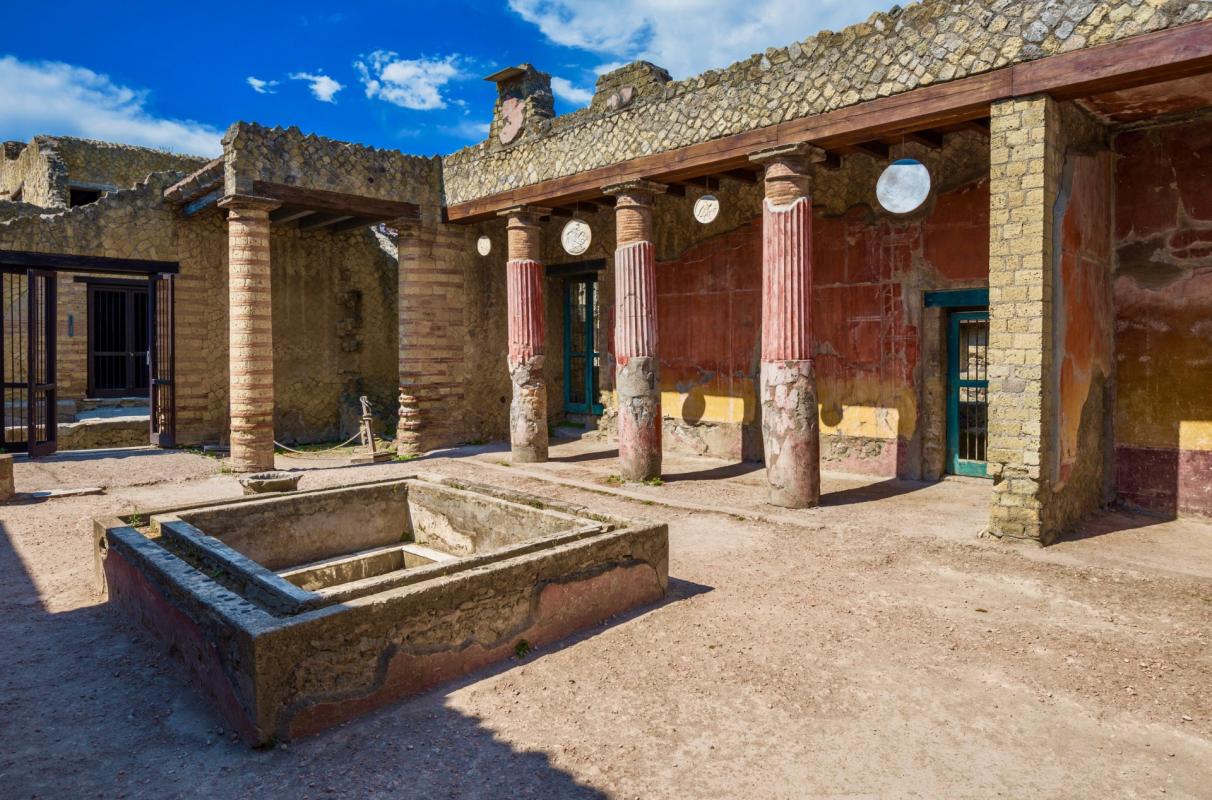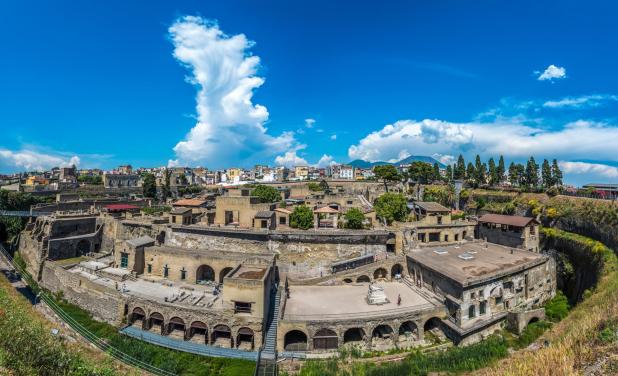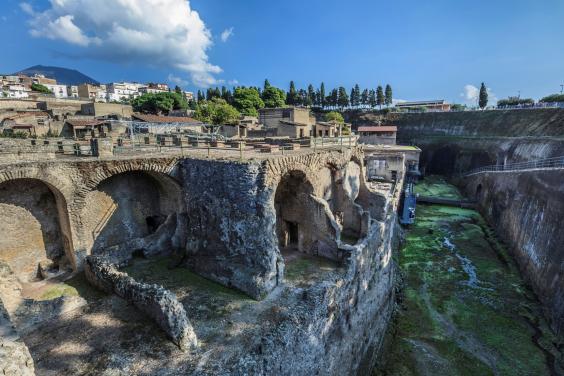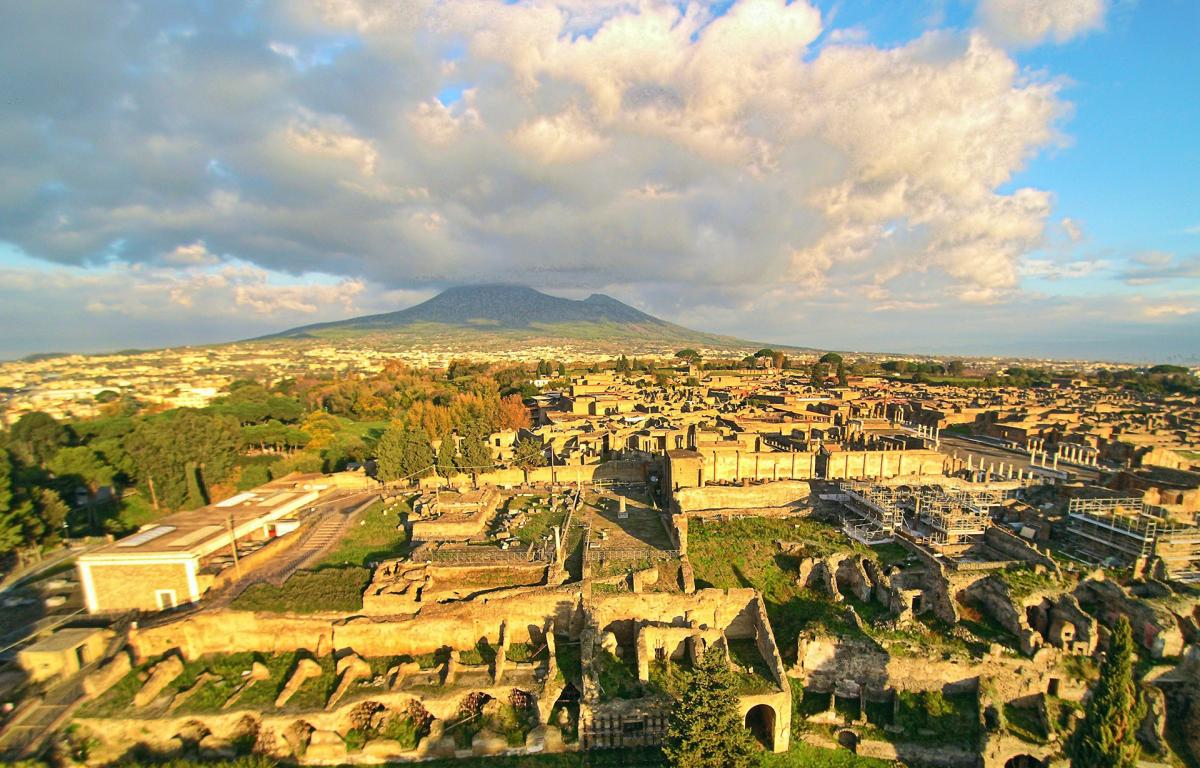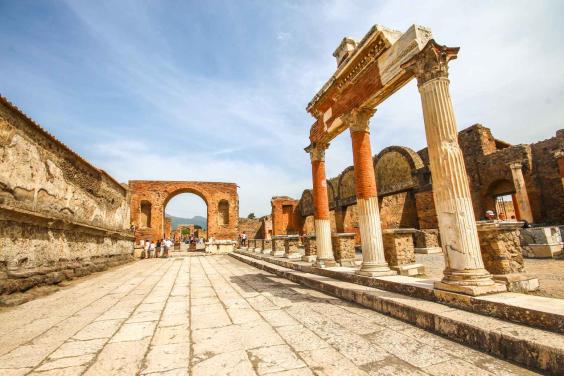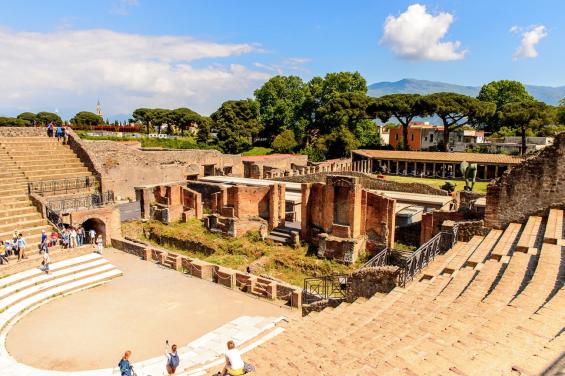Pompeii
Pompeii, a UNESCO World Heritage Site, is one of the main attractions that brings millions of tourists to our region every year. An ancient and fascinating Roman city that was completely submerged by ash and lava during the eruption of the volcano Vesuvius in 79 AD. Today inside the archaeological site, which covers about 440,000 square metres, you can admire the forum, once the centre of the city's political and social life, squares, temples, theatres, shops, buildings and houses with their decorations, mosaics, paintings and everyday objects.
Pompeii archaeological ruins are located on a volcanic plateau on the southern slope of Vesuvius, about 30 metres above sea level and a short distance from the mouth of the river Sarno, in an evocative position, praised in Roman times even by Seneca. The lack of springs or watercourses on the plateau prevented it from being populated in the remotest times, although some settlements had formed in the nearby Sarno valley during the 8th century BC, as evidenced by numerous pit tombs. The population who founded Pompeii was certainly Oscan, but it is doubtful whether the name of the city itself derives from Greek or from Oscan.
Herculaneum
Even if they are less famous than Pompeii ruins, Herculaneum archaeological ruins are as important and they have been declared UNESCO World Heritage Site too. The eruption of the Vesuvius submerged the city in a pyroclastic cloud which, unlike Pompeii, prevented materials such as wood and fabric from decomposing. When you visit the ruins of Herculaneum, you will find yourself walking through the streets of an ancient Roman city where you can admire buildings and houses with jewellery, furnishings, sumptuous coloured mosaics, wall paintings and marble cladding. The Villa of the Papyri, built overlooking the sea, contained over 1800 papyri and extraordinary sculptures.
In Roman times, thanks to its position next to the sea, the pureness of the air and the Mediterranean climate, it was a holiday destination for many patrician families. Today many sculptures, paintings, vases and other objects found during the excavations are kept in the Archaeological Museum of Naples.
Vesuvius
Visiting the Vesuvius means travelling among history, geology and nature, actually this land is an ensemble of natural beauties, breath-taking landscapes, ancient vegetation and traditions which make this area one of the most charming and visited places in the world. This area has become the Vesuvius National Park, born to preserve the local flora, fauna and biodiversity. Once reached the top of the crater, which is more than 200 m deep, you can enjoy a spectacular view of the entire Gulf of Naples. Today, the activity of Vesuvius is constantly monitored by the National Institute of Geophysics and Volcanology, as a current eruption would be devastating given the presence, on its slopes and nearby, of millions of homes.
